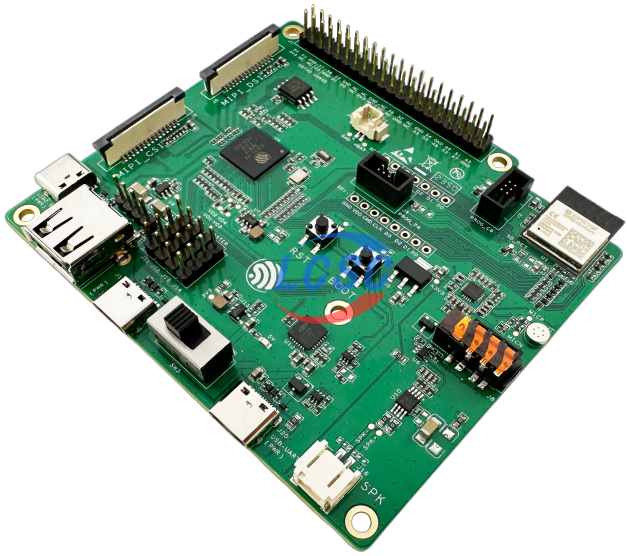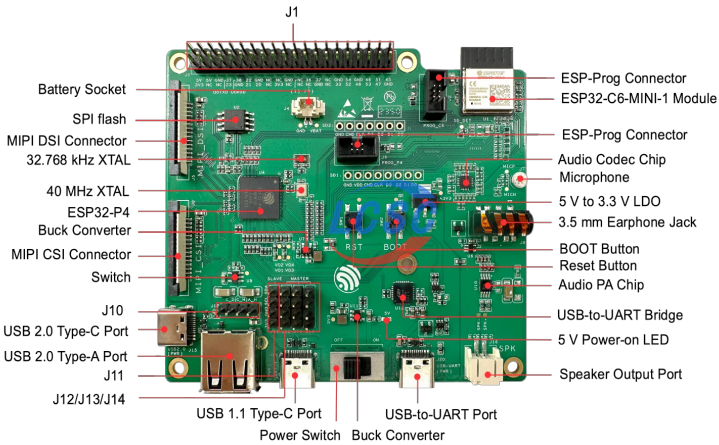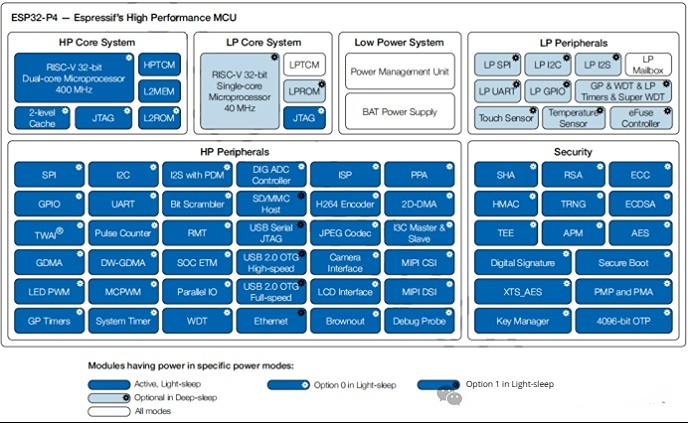Espressif released a new generation of MCU chip ESP32-P4, and the ESP32-P4 development board also debuted. In this article, LCSC supplier Wireless-tag will explain the ESP32-P4 multimedia development board.

Overview of ESP32-P4 Development Board
Espressif’s ESP32-P4_Function_EV_Board development board is a multimedia development board designed based on the ESP32-P4 chip. The ESP32-P4 has a dual-core 400 MHz RISC-V processor and supports 32 MB PSRAM. In addition, the ESP32-P4 supports USB 2.0 standards, MIPI-CSI/DSI, H264 Encoder, and other peripherals, which can meet customers’ development needs for low-cost, low-power multimedia products.
Most of the module pins on the board are brought out to header pins. It allows developers to easily connect various devices through jumpers according to actual needs. The development board can also be plugged into a breadboard for use.


The ESP32-C6-MINI-1 module on the development board can serve for Wi-Fi and Bluetooth communications; the two ESP-Pro interfaces can serve for programming and debugging the ESP32-P4 chip and ESP32-C6 module respectively; and through the ESP32-P4 external audio Codec chip, audio PA, microphone, headphone and speaker interfaces, we can achieve a variety of audio processing and applications; two high-speed USB2.0 interfaces support Type-A and Type-C respectively, both of which can serve to communicate with the ESP32-P4 chip; MIPI CSI/DSI interfaces serve for external camera modules and LCD expansion boards respectively to achieve image and video transmission and display. In addition, the board also has 16MB of SPI Flash, a battery interface, a MicroSD card slot, multiple sets of peripheral interface pins, and other components.
Development Board Functional Block Diagram

Introduction to ESP32-P4 Chip

ESP32-P4 Chip Features
- RISC-V 32-bit dual-core processor for HP systems, up to 400 MHz, with AI instruction extensions and FPU
- RISC-V 32-bit single-core processor for LP systems, up to 40 MHz
- Built-in 128 KB HP ROM, 16 KB LP ROM, 768 KB HP L2MEM, 32 KB LP SRAM, and 8 KB system tightly coupled memory (TCM) allowing zero-wait access
- 96 KB l1 cache, 128 KB/256 KB/512 KB l2 cache
- Powerful image and voice processing capabilities
–JPEG encoder/decoder
–Pixel processing accelerator (PPA)
–Image signal processor (ISP)
–H264 video encoder
- Rich communication interfaces, up to 55 GPIO pins, can support a variety of scenarios and complex applications
- Complete security mechanism
–Hardware encryption accelerator supports AES-128/192/256, RSA, HMAC, ECC, digital signature, and secure boot
–Key manager based on physical uncopyable feature (PUF)
–True random number generator
–Support PMP and PMA
–Support access permission management of on-chip memory, off-chip memory and peripherals
–Supports off-chip memory encryption and decryption
Application Scenarios
| Industry | Application |
| Image and Speech Processing | Image recognition, speech recognition, IoT edge computing, IP cameras (IPC) |
| Smart Home | Smart lighting, smart buttons, smart sockets, indoor positioning, smart meters, security systems, HVAC systems |
| Industrial Automation | Industrial robots, human-machine interface (HMI), industrial bus, asset management, personnel tracking |
| Health Care | Health monitoring, baby monitoring |
| Consumer Electronics | Smart watches:
Smart bracelets, OTT TV boxes, set-top box devices Toys with data upload functions and proximity sensing toys: Toy handles, remote controls |
| Smart Agriculture | Smart greenhouses, smart irrigation, agricultural robots, livestock tracking |
| Retail and Catering | POS system, service robot |
| Other | Universal low power IoT sensor hub, universal low power IoT data logger |
Conclusion
The ESP32-P4 development board is a low-power multimedia development board with dual-core RISC-V processors, USB 2.0, and extensive audio/video capabilities. It is ideal for IoT devices and smart applications. Visit Wireless-tag‘s brand page on LCSC.
